
According to a March 2024 Gallup National Health and Well-Being Index survey, an estimated 15.5 million people have used injectable diabetes medications for weight loss, with 3% currently using them specifically for this purpose. Nearly two-thirds (64%) of Americans who have tried weight loss injections report the drugs as being “extremely effective” or “effective.”
A pressing question for many users of GLP-1 receptor agonist medications, like Ozempic or Mounjaro, is: What should I eat to maximize their effectiveness and sustain my weight loss goals?
Responding to this growing need, major food companies are adapting their products. In May 2024, Nestlé introduced Vital Pursuit, a new frozen food line crafted specifically for users of GLP-1 weight loss medications. Described by Nestlé as “high in protein, a good source of fiber, and contain essential nutrients,” and priced at $4.99 or less per item, the Vital Pursuit line includes options such as sandwich melts, pizzas, and bowls featuring whole grains or protein pasta.
With the growing discussion around the optimal diet for weight loss medication users, we consulted Meghan Garcia-Webb, MD, who is triple-board-certified in internal medicine, lifestyle medicine, and obesity medicine. Dr. Garcia-Webb emphasizes the importance of proper nutrition and high-quality protein intake: “Patients should make sure they are eating good quality protein when starting Ozempic or any other GLP-1 receptor agonist. A good goal is to aim for 1.0 to 1.2 grams of protein per kilogram of ideal body weight.” For someone aiming for a weight of 150 pounds, this means targeting 68 to 81 grams of protein daily. However, Dr. Garcia Webb advises it’s always wise to consult with your doctor to personalize your dietary needs.
Get The Healthy by Reader’s Digest newlsetter
Keep reading to learn top dietary recommendations for Ozempic users, how to minimize nausea, and ways to maximize the benefits of these weight loss medications. [Editor’s note: While we refer specifically to Ozempic within this piece, these practices may generally apply to the use of all drugs within the weight loss injectable category, such as Mounjaro, a tirzepatide, and others.]
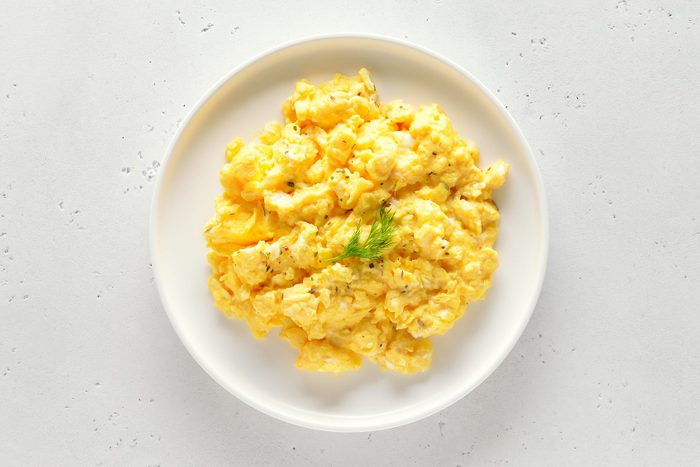
What to eat when you take an injectable weight-loss medication
Dr. Garcia-Webb begins by noting that she avoids categorizing foods as “good” or “bad,” which can perpetuate today’s harmful diet culture. With that perspective in mind, she suggests focusing on foods that offer greater nutritional value and can be particularly beneficial when starting a new weight loss medication.
1. Eggs
Whether you opt for just the whites or the whole egg—depending on how closely you watch your cholesterol—eggs are a great choice when you’re on weight loss medication.
Eggs are packed with protein (about six to seven grams each) that can help keep you feeling satisfied. As Dr. Garcia-Webb points out, eggs are “easier on those days when you don’t feel like eating much.” Another plus is that they’re simple to prepare and typically gentle on digestion, making eggs a no-fuss option for days when your appetite is low but your nutritional needs are high.
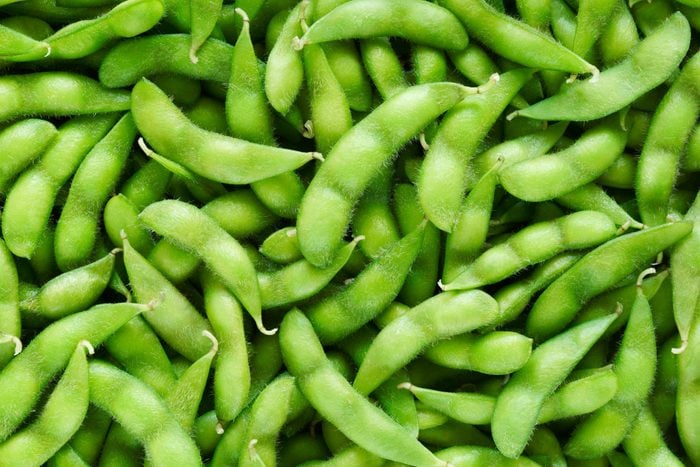
2. Edamame
Edamame, those vibrant green soybeans that often come in their own little pods, aren’t just a delicious snack. Dr. Garcia-Webb shares that they’re packed with protein and fiber, making them a perfect pick for anyone using weight loss medications. These nutrients help keep you feeling full, which can curb the urge to indulge. Toss them in your salads, stir them into soups, or steam them with a sprinkle of sea salt for an easy, nutritious meal boost.

3. Full-fat yogurt
Dr. Garcia-Webb recommends full-fat yogurt as another great option for those wondering what to eat on weight loss injectables for its high protein content and beneficial probiotics. She suggests opting for this richer, creamier version instead of the often over-processed and less satisfying no-fat varieties, which often contain added sugars. Pair your full-fat yogurt with a generous serving of fresh fruit to enhance its flavor and add vitamins and antioxidants.
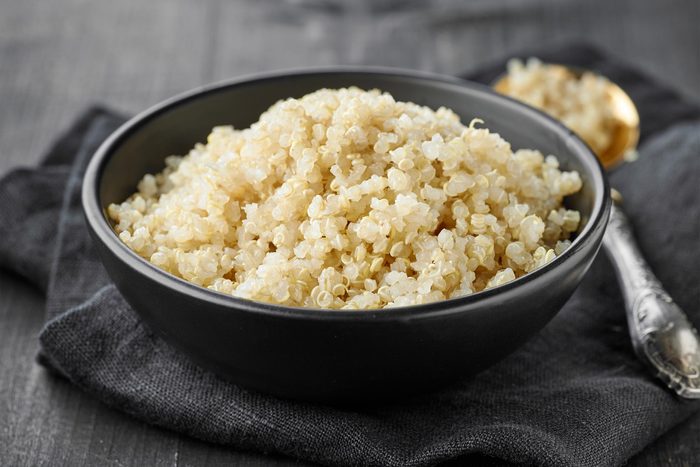
4. Quinoa
This whole grain is celebrated for its gentle nature on the stomach, making it an excellent choice for days when you need something bland but still want to meet your protein needs. Dr. Garcia-Webb points out that quinoa is not only a high-protein food but also one that is easily incorporated into various dishes. Whether you’re mixing it into salads, using it as a base for stir-fries or substituting it for rice in your favorite recipes, quinoa responds to a range of dietary requirements while being kind to your tummy.
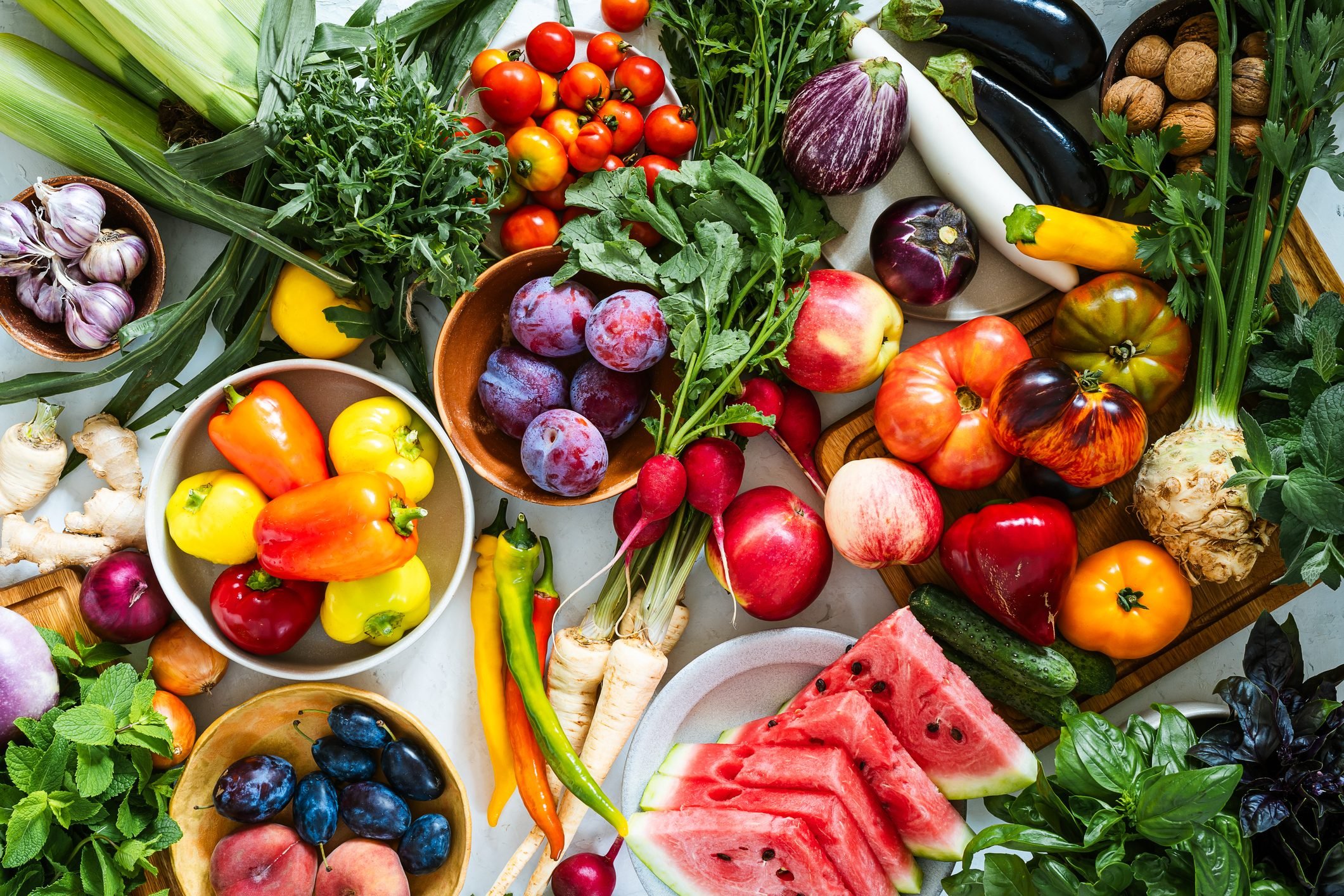
5. Rainbow of produce
Exploring a variety of fruits and vegetables can be a smart way to discover what works best for your stomach, especially when considering what to eat on Ozempic. Dr. Garcia-Webb advises, “You may want to stick to the blander foods—bananas, sweet potatoes, roasted cauliflower—in the early stages of your weight medication journey.” These options can ease your system into the changes while ensuring you still enjoy a variety of nutrients on your plate.

What to eat on Ozempic to avoid nausea
When taking Ozempic, nausea can be a common side effect, but with a few dietary adjustments, you can ease this discomfort. Dr. Garcia-Webb shares her top recommendations:
-
Opt for small, frequent meals: Consuming very small meals every few hours can help alleviate nausea. Choose bland foods such as bananas, eggs and nut butters, which are easier on the stomach.
-
Incorporate protein shakes: If you find your appetite is extremely suppressed, protein shakes can be a light choice that delivers protein your body needs.
-
Be patient: Remember, your eating habits may change temporarily as your body adjusts to the medication. This phase is not permanent, and your diet can adapt over time.
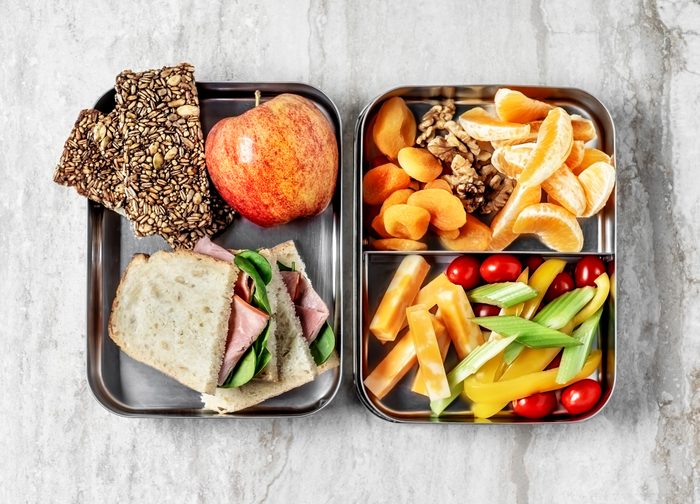
How many calories should I eat per day on a weight loss injectable drug?
When it comes to caloric intake on a drug like Ozempic, Dr. Garcia-Webb suggests there’s no need for rigorous calorie counting. Instead, she offers a refreshing perspective: “I’m not a huge fan of calorie counting—I prefer that patients learn to listen to their internal hunger and fullness cues,” she explains.
In fact, these drugs can improve your sensitivity to these natural signals, intensifying them to a point where they’re unmistakable. The consequences of ignoring these cues—like nausea, vomiting, and abdominal cramping—are immediate and can encourage you to grow more in-tune with what your body is telling you.
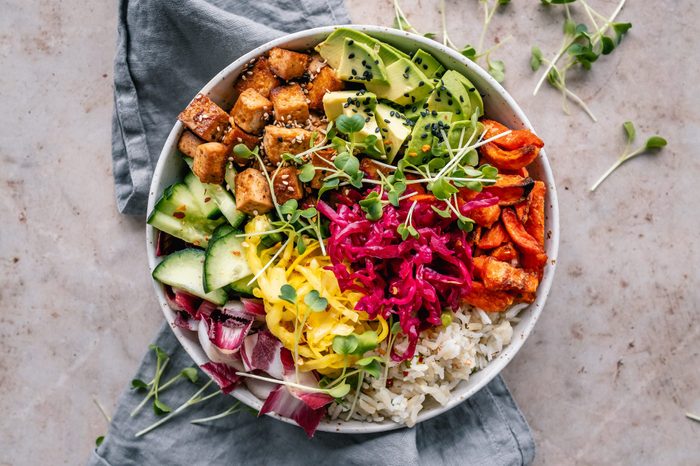
Here’s how you can maximize the benefits of your weight loss medication
Dr. Garcia-Webb advises: “I always tell patients that it is not a race—because these are most likely lifelong medications. There is no rush, and the goal is to make the weight loss sustainable and not miserable.” To optimize the benefits:
- Prioritize protein and whole foods: In addition to protein, focus on a diet rich in unprocessed foods, aiming for five servings of fruits and vegetables daily.
- Be mindful of cholesterol intake: Increase your protein intake carefully, as main sources like meat and eggs can also raise cholesterol levels. She recommends exploring plant-based proteins to mitigate this risk.
- Plan for the future: Think about how you want to maintain a healthy diet long-term. If you enjoy bread, for instance, consider how to incorporate it in a healthy way, such as opting for high-quality varieties, baking it yourself, or reserving it for dining out.
By adjusting how you view and consume food while on weight loss medications like Ozempic, you can create a nourishing, satisfying dietary routine that supports your health and complements your medical treatment.
About the expert
|
For wellness updates delivered daily, subscribe to The Healthy by Reader’s Digest newsletter and follow The Healthy on Facebook and Instagram. Keep reading:
- “Here’s What Happened When I Stopped Taking Ozempic”: One Patient’s Story Navigating a New Normal
- Insurance Will Now Cover Popular Weight Loss Drugs for Some Patients
- On Weight Loss Medication? You May Be Lacking in This Essential Nutrient
- Trying To Quit Ozempic? Here’s What Nutrition Experts Say You Should Eat
